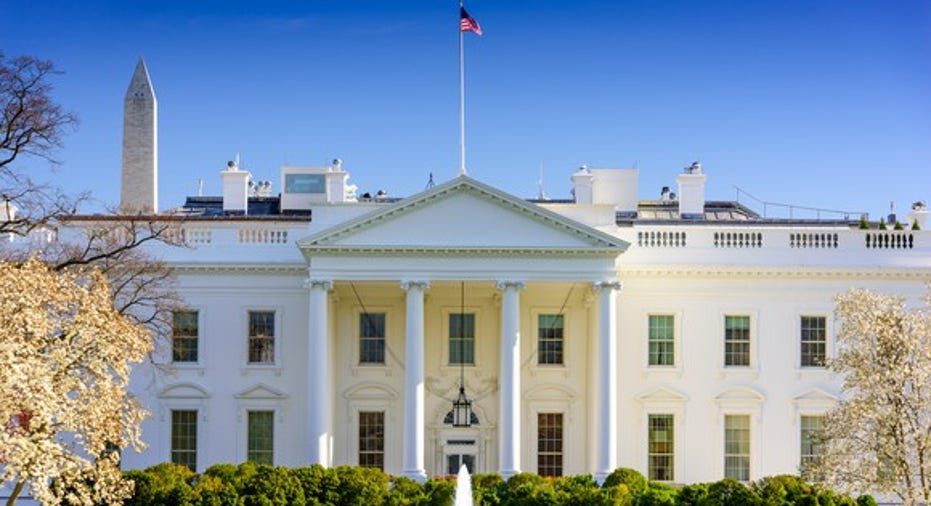The Dow's Worst Day in 2016

2016 was a momentous year, and for the Dow Jones Industrials (DJINDICES: ^DJI), it was a successful one. Yet the year was also chock-full of major events, and many of them roiled the financial markets from time to time. In terms of the largest fall between market closes on consecutive days, the Dow's worst day of the year came on June 24, when the Brexit decision for the U.K. to leave the European Union sent the average down 610 points. But an even bigger drop never even made it to the floor of U.S. stock exchanges, because it happened overnight: on Nov. 8 and 9, immediately following the U.S. presidential election.
Image source: Getty Images.
Election uncertainty created volatility
Leading up to the November election, the stock market had on numerous occasions seemed to indicate that investors were, on balance, more comfortable with the prospects of a Hillary Clinton victory. When the FBI announced in late October that it would look into new email communications to see if there was any connection to Clinton, the Dow fell. The subsequent announcement of no new findings in early November sent the Dow back upward, with many interpreting the 371 point gain on the day before the election as a sign of confidence that Clinton would win.
However, investors got a shock when Donald Trump won the election. As key battleground states like Florida and Ohio went to the Republican candidate, futures contracts for the Dow Jones Industrials fell nearly 900 points. Other stock market futures were down more than 5% briefly as the Trump victory became more certain.
Most market participants reacted to the uncertainty involved in a Trump presidency. With a new unorthodox approach to politics, Trump's likely policy stances were inherently unpredictable, and even the tone of his relationship with his own party's leaders in Congress wasn't clear. With hardline campaign stances on trade policy and international relations, investors were spooked as the reality of the Trump win hit them.
Why the Dow's worst day never came to be
However, the Dow Jones Industrials quickly rebounded from the initial shock of the election results. By the time the market opened on the day after the election, the Dow opened just 15 points lower. Indeed, rather than a big drop, the Dow closed on that Wednesday up 257 points, starting what would become a massive rally that would carry the average to the brink of the 20,000 mark in just six weeks.
One reason for the rebound was that key influential investors saw opportunity in the plunge. The most-reported instance involved activist investor Carl Icahn, who is a noted supporter of the president-elect. He reportedly left an election-night party to make bullish investments in the overnight financial markets, and those investments quickly paid off as the feared stock market crash never surfaced.
Why panic is never the right answer
In some ways, it's fortunate for investors that they never actually saw all of the volatility in the Dow during an ordinary trading session. If the Dow had fallen 900 points at a time when most ordinary investors could have made trades, many investors likely would have sold out of panic and fear. That would have exacerbated the volatility in the markets, and the ensuing bounce would have likely left many market participants having made exactly the wrong move.
Time and time again, the stock market has shown that knee-jerk responses to unexpected events are often short-lived and ill-conceived. Even though many such events do have major implications for financial markets, the direction and magnitude of an appropriate response is usually unclear. The markets rarely get it right in the minutes and hours immediately following the event.
What long-term investors should learn from what could have become the Dow's worst day in 2016 is that being prepared for contingencies is an important part of being successful in investing. By coldly dispensing with emotion and instead looking at opportunities when they arise, you'll be better prepared when the worst market days come in 2017 and beyond.
10 stocks we like better thanWal-MartWhen investing geniuses David and TomGardner have a stock tip, it can pay to listen. After all, the newsletter theyhave run for over a decade, the Motley Fool Stock Advisor, has tripled the market.*
David and Tomjust revealed what they believe are the10 best stocksfor investors to buy right now...and Wal-Mart wasn't one of them! That's right -- theythink these 10 stocks are even better buys.
Click hereto learn about these picks!
*StockAdvisor returns as of December 12, 2016.The author(s) may have a position in any stocks mentioned.
Dan Caplinger has no position in any stocks mentioned. The Motley Fool has no position in any of the stocks mentioned. The Motley Fool has a disclosure policy.